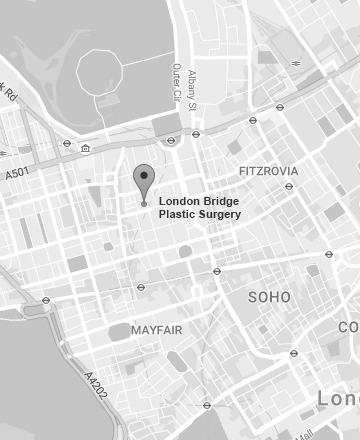PhotoDynamic Therapy
With increasing life expectancy, the accumulated exposure to harmful UVA and UVB combined with natural aging cause the typical skin changes; fine lines, wrinkles, pigmentation, age spots or brown spots as well as various skin lesions from precancerous lesions such as actinic keratosis, to basal cell carcinomas BCC, and Bowen’s disease and Squamous cell cancers to malignant melanomas. Skin cancer is the most common form of cancer (36% of all cancers) and is continuing to increase year on year by 5%.

At London Bridge Plastic Surgery & Aesthetic Clinic, Photodynamic Therapy PDT or rejuvenation PDT is used to destroy abnormal skin cells, remove abnormal pigmentation and provide visible skin rejuvenation. PDT is also effective in treating moderate to severe acne.
Photodynamic therapy PDT uses a photosensitising agent which is preferentially absorbed by abnormal cells in the skin, when exposed to red light, Omnilux Revive, destroys abnormal, precancerous or cancerous cells to effectively restore the skin the a healthy, smooth and even tone.
-
Am I suitable for Photodynamic therapy PDT?f you are concerned about photoaging of your skin which shows signs of wrinkles, fine lines, age spots, pigmentation or early skin cancers such as actinic keratosis, or BCC, then PDT may be a suitable option to effectively restore a rejuvenated skin. Other non-pigmented skin cancers, BCC, Bowen’s disease, superficial SCCs can be safely treated with PDT. A full skin analysis will be carried out with both clinical and VISIA Skin Analysis prior to prescribing a course of treatment which is optimum for your skin.
-
How does Photodynamic therapy PDT work?Red light (Omnilux Revive) activates the photosensitive agent absorbed by the abnormal skin cells which releases highly reactive oxygen – singlet oxygen. This singlet oxygen destroys the cell which is then shed as new cells grow to replace the killed cells leaving the skin fresh and renewed. Because the photosensitising agent is preferentially absorbed by abnormal cells, normal cells are not affected.
-
How is the photodynamic therapy PDT performed?Firstly, your skin s prepared by cleansing and exfoliation with the JetPeel treatment. The photosensitising cream is then applied to the area to be treated and left on for 30 minutes to 3 hours; called the Contact Time, depending on the goal of PDT. After the prescribed Contact Time, the excess cream is removed and the area is exposed to Red Light – Omnilux Revive for 20 minutes. The treatment may be repeated in 2 to 4 weeks depending on the skin condition being treated.
-
Are there any side effects from Photodynamic Therapy PDT?Some discomfort or pain may be felt during the Red Light exposure. Suitable analgesia will be prescribed prior to Omnilux Revive treatment. Your skin will be pink or red following PDT treatment which can last for up to 5 or 7 days. The severity f redness will depend on the intensity of the PDT treatment required to destroy all abnormal cells and restore healthy skin. You will need to use a high factor sunblock, we recommend a SPF 50 every day to protect your skin. Flaking or peeling of the skin occurs for 5 to 7 days as a result of the shedding of the dead skin cells.
-
Is Photodynamic Therapy PDT safe?Yes, numerous clinical studies have been published in peer reviewed journals confirming the safety and effectiveness of PDT for skin rejuvenation and treating early skin cancers and acne.
-
What is the advantage of Photodynamic Therapy PDT?Using the photosensitising agent with Red light, Omnilux Revive, ensures that all abnormal cells are destroyed especially those cells which are not visible on the surface, thus importantly, reducing the risk of future precancerous lesions or skin cancers. PDT can be used on all areas of the face and body avoiding the need for surgical excision of abnormal lesions. Because not scaring occurs following PDT treatment, the cosmetic outcome is excellent.







